Thomas E. Ricks's Blog, page 180
June 1, 2012
Missouri National Guards looted a Wal-Mart while searching for tornado survivors

A general once told me that a small but significant
percentage of soldiers in any unit are criminals at heart, and that one job of small
unit leaders is to prevent them from spreading the rot to other members of
the unit.
I thought of that when I read this
article revealing that a sergeant and three other members of the National
Guard pocketed some electronic gear at Wal-Mart in Joplin, Missouri, when sent
there to provide aid after part of the town was smashed by a huge tornado May
in 2011.
Speaking of criminal activity, the former command master
chief of the USS Fort McHenry
was sentenced
to 60 days in the brig for assaulting crew members. He also supposedly has
some issues with pawing the buttocks of female sailors.
Rebecca's War Dog of the Week: May claims two K-9 handlers, MA2 Brazas and Cpl. Coffey, KIA in Afghanistan

MA2 Sean Brazas holding MWD
Sicario at Yuma Proving Ground.
By Rebecca Frankel
Best Defense Chief Canine Correspondent
Shock and sadness rippled through the MWD world this week
with the news that handler U.S. Navy Master at Arms 2nd Class Sean
Brazas died on May 30th. He was killed
by a single bullet while helping a fellow serviceman into a helicopter during
"combat operations in Panjwa'l, Afghanistan." MA2 Brazas's working dog and
partner, Sicario, was reportedly treated for heat exhaustion that day but was
not injured in the attack.
Brazas is survived by his wife, Allie, and their 13-month-old
daughter. Originally from Greensboro, NC, Brazas had just celebrated his 26th birthday
on May 1, only days after arriving in Afghanistan.
In April, just before the pair deployed, Brazas and Sicario
went through the Inter-Service
Advance Skills K9 course, the three-week,
Marine-run training program based out of Yuma Proving Ground in Yuma,
AZ. Upon completion of the course the pair received high honors,
claiming the Top Dog Award.
MA1 Jennifer Trambulo, an instructor at YPG, told me
yesterday that, "Brazas made such an impact on all of us
instructors ... He was so appreciative of all the people that helped him get K-9.
He gave the ultimate sacrifice. He will never be forgotten."
One of Brazas's mentors, MA1 Shannon Golden, says Sean was a
remarkably hard-working handler who "always had a smile on his face." She and
Sean were stationed together in Guam a few years ago; he was there on kennel
support. "The first time I
met Sean was when he came over to find out how he could become a dog handler. He wanted to work with dogs so
bad that he dedicated his off time to come over to the security department and
work at the kennels."
Golden,
who is currently deployed in Africa, spoke with me online late last night. She talked
about Sean openly, and the fresh pain of her loss was palpable. Golden said that her first reaction to the news of
Sean's death was anger. "I have to admit that I was very mad when I heard," she
told me. "Even mad at him cause he told me earlier that he was gonna be fine,
that 'I know him' and 'he's quick on his feet.'" But even in his death, Golden
feels Sean's character shines through. That he was killed while assisting someone
else, is to her just "typical Sean."
"He cared about everyone. He put
his life on the line. I think even if he knew by helping that soldier to [the
helicopter] things would turn out the way it did, he would still help the guy."
Tucked in the corner of MA2 Sean Brazas's Facebook page, under
"favorite quotation," is a line by Will Rogers, American cowboy
and 1920s vaudeville celebrity, that is now as painful as it is poignant to
take in. It reads: "If there are no dogs in Heaven, then
when I die I want to go where they went."

Cpl.
Keaton G. Coffey on deployment with his MWD, posted March 19.
Brazas's death comes too close on the heels of news of another
canine handler killed in action only days earlier in Helmand, Afghanistan, Marine
Cpl. Keaton
Coffey. According to the DoD release,
he died on May 24th also "during combat operations." His dog, Denny, survived.
Cpl. Coffey
only had three weeks left on his tour during his second deployment to Afghanistan
when he was killed. He was scheduled to return back to his base, Camp
Pendleton. The 22-year-old native of Boring, OR, was to be married to in a
wedding ceremony planned for this July.
Coffey is remembered
as "gentle" and "compassionate." The principal of his high school, where as a
senior he was elected student body president, told
reporters that even as a young man he was "polite, respectful,
kind, and considerate." Coffey's body was returned home to the United
States in a flag-draped coffin arriving to Dover Air Force Base on May 26.
A service for Keaton Coffey will be held
on June 4 after which he will be laid to rest in the Willamette National Cemetery in Oregon with
full military honors. While funeral arrangements are still
forthcoming, Sean Brazas will be laid to rest in Arlington Cemetery, alongside
his grandfather who fought in WWII.
May has been a cruel month for the MWD community. But the close
of this month saw not just an outpouring of grief but also of shared
support, respect, and remembrance, with people honoring Coffey and Brazas by posting photos
and memories online.
As word of Brazas's death first appeared on the Internet, the public
Facebook group Military
Working Dogs -- run by a group of former military handlers -- posted the
information they had to offer, promising, "We will post more
information as we receive it. Rest in peace, brother. We have the watch."
Rebecca Frankel, on leave from her FP desk, is currently writing a book about military working dogs, to be published by Free Press.
May 31, 2012
COIN at Yale
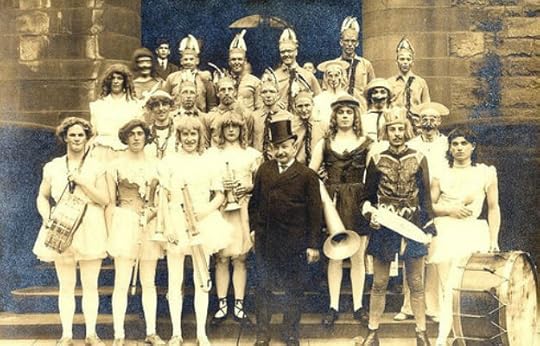
Yale political scientist Nicholas Sambanis and a couple of
his homeys had an article in Science
magazine (May 18, 2012 issue) titled "Parochialism as a Central Challenge in
Counterinsurgency."
I am pretty sure I don't understand the article well,
because I am not familiar with the political science literature on
parochialism. But I can read, and it seems to me that core conclusions of the article are that:
--Counterinsurgency is harder and more complex than it looks.
-- It was only partially responsible (at best) for the
decrease in violence in Iraq in 2007.
--It didn't work in Afghanistan.
I think anyone who spent time on the ground in either war
would find those conclusions uncontroversial.
My one problem with the article is that it assumes that the
counterinsurgent desires peace, and that this is the goal of any
counterinsurgency campaign. But I suspect that for many people, the central
goal of the American COIN campaign in Iraq in 2007-08 was to extricate the U.S.
military from Iraq in a way that didn't look like the Americans were just
running away. I think that if that was indeed the case then, whatever
ultimately happens in Iraq, then the 2007-08 COIN campaign succeeded.
(HT to JB)
Quote of the day: If you are looking for what ails America, look in the mirror
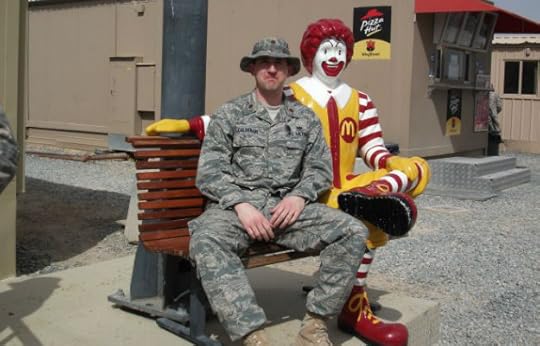
David
Rothkopf on the American search
for enemies abroad: "The United States is a bit like a 375-pound, middle-aged man with a
heart condition walking down a city street at night eating a Big Mac. He's sweating
profusely because he's afraid he might get mugged. But the thing that's going
to kill him is the burger."
What to do after the dictatorship falls?
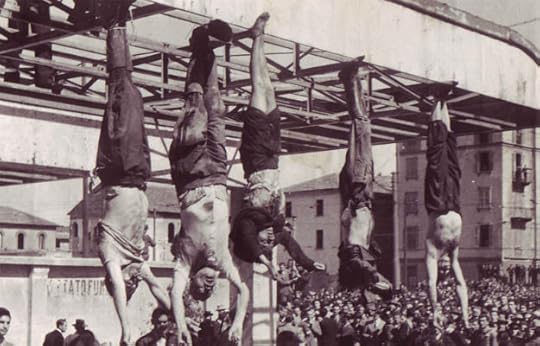
By Robert Helvey
Best Defense bureau of war termination
What to do after the dictatorship falls is a question that
needs to be answered before the first "above the ground" opposition
demonstration or other action takes place. Too often we seem to take a "Chicken Little" approach to planning. That is, nothing is remembered from
yesterday, and no thought is given to tomorrow. Moreover, there seems to be a widely held view that the transition to
democratic government from authoritarian rule begins after the dictatorship has
been removed.
The fact is that the transition from dictatorship to
democracy begins when the people have a vision of tomorrow that provides a
better life for themselves. This
transformation in attitude from hopelessness to hope is the beginning of a
revolution. The revolution ends when
that vision becomes structurally possible in a government that is responsive to
the will of the people. Ending the
dictatorship is merely one of many phases in that march to victory.
In waging a strategic nonviolent conflict, the vision of
tomorrow is translated into a strategic goal in which the general public can
see themselves better off at the end of a successful struggle, and they are confident
enough in their movement leadership to risk their lives and fortunes in
bringing down the dictatorship by removing its very sources of power found in "pillars of support." These pillars are those institutions and organizations
that make themselves available to be used by the dictator. Most often these are the military, police,
political parties, religious institutions, government workers, and large
businesses.
To prepare the battlefields for waging a strategic
nonviolent struggle, many of the same considerations given to waging an armed
conflict are applicable. For example, no military commander worthy of command would ever develop a strategic plan
without preparing a strategic estimate in order to identify the environment in
which the struggle would be waged, the capabilities of his own and opponent
forces, and conducting a detailed analysis of opposing courses of action. As an observer, I cannot find any evidence of
a strategic estimate being prepared by either the Egyptian or Syrian nonviolent
movements. Otherwise, there would have
been plans to pre-empt the Muslim Brotherhood victories in the recent elections
and the Syrian movement would have considered that the current Assad would most
likely act as did his father in quelling opposition through slaughter. They would have
prepared for this contingency from the very beginning of the movement.
Another strategic planning failure is the misconception that
a nonviolent movement can co-exist with a violent (armed) component. There is
no nonviolent force that can exist with an armed element within its movement,
any more than a pregnant virgin can walk among us. (There has only been one recorded incident of
this happening and that was more than 2000 years ago.) If a movement leadership
requests the participation of foreign military forces in its democracy
struggle, it is, in effect, forfeiting its claim to self-liberation and has
placed its future to be subordinate to the interests of the foreign government
intervening on its behalf.
In addition, should a
nation, or its generals, commit combat forces to national development they need to
understand that combat soldiers are trained to destroy, not build. No one
should ever see a deployed combat unit unless they are targeted for destruction
momentarily. Nation-building missions
initiated by combat forces dilute the commitment to battle and send confusing
signals to both the combat forces and the enemy (as
hapless civilians find themselves needing a chocolate bar from the soldiers who may be
attacking their village tomorrow). In
short, if the military mission is to be assistant mayors, well diggers, and
barefoot doctors, then send the combat forces home. If the infantry, armor, and artillery
constitute the "point of the spear," it should not be dulled by digging wells and fraternizing with the locals. Combat
commanders should not be restricting the ability of combat forces to destroy
those who attack our troops. Committing our soldiers to fight, then forbidding them
from killing their attackers is simply criminal. The point to be made is that
nonviolent movements cannot accommodate military forces, whether their generals
are incompetent or brilliant.
Preparing plans for waging a strategic nonviolent conflict
requires that the planners keep the vision of tomorrow in focus throughout the planning phases, not unlike a
composer of a symphony keeps the melodies in mind as he writes the score for
each instrument to contribute to the
crescendo of the final movement.
Returning to the question of what to do when the dictator
falls, there must be a blitzkrieg of nonviolent actions to create a new
government, achieve diplomatic recognition, publish a draft constitution, hold
a referendum, then hold elections under that new constitution, prepare amnesty
policies, and finally detain those responsible for heinous crimes who will be tried in
accordance with the rule of law. This
part of the transition is very dangerous for democratic movements and needs to
proceed at "warp speed" to gain the obedience and loyalty of the coercive
pillars of support and to preempt groups contemplating overthrowing the newly
installed interim government. Every
detail must be thought out for maximum impact. These steps need to be examined well before the dictator is removed, and
ready when like a nuclear submarine surfacing at max speed, a huge wave goes through
society, shaking the regime to its core. In its wake, a new society takes its place, demonstrating competence and
commitment to achieve the vision that sparked the revolution. That takes
strategic planning. Instead of giving pallets of $100 bills to Afghan warlords
and corrupt officials, we might be better off transferring strategic planning
skills to a few university professors in Kabul, Cairo, Damascus, and Baghdad.
Col. Robert L. Helvey, U.S.
Army, (ret), is the author of
On
Strategic Nonviolent Conflict: Thinking About the Fundamentals
, and a consultant and instructor to
pro-democracy groups.
May 30, 2012
Crumpton's greatest hits: North Koreans and porn, Wolfowitz stoned on Iraq, and British spies not as good as they think
There are many memorable lines in Henry Crumpton's new book The
Art of Intelligence. Here are some of them:
--"I never met a North Korean diplomat who did not want
porn, either for personal use or resale."
--His take on working with the FBI: "This was a tribe that
valued oral stories and history. I came from a tribe that treasured the written
intelligence report."
--Another difference between the FBI and the CIA was size:
"The FBI's New York field officer had more agents than the CIA had operations
officers -- for the entire planet."
--On British intelligence: "The British were good, but not
as good as they thought or acted. One issue was their failure to realize the
growing radical threat within their own borders."
--His reaction to the insistence of Deputy Defense Secretary
Paul Wolfowitz's that the 9/11 attacks had to have been sponsored by a state,
and probably by Iraq: "What is he smoking?"
--One reason we bungled the Iraq war: "Unlike in
Afghanistan, we launched a war against the country of Iraq while utterly
ignoring our most important ally -- the Iraqi people."
--An approach to personnel that likely will warm the hearts
of Butch
Bracknell, Andrew
Person, and others who think our current personnel policies screwed up our
current wars: "John and I wanted the officers providing HQS support to the
field eventually to be assigned to the field themselves. We intentionally
devised the personnel system for maximum service to the field. Our ops guys in
HQS were supporting our ops guys in the field, and soon their roles would be
reversed."
--The message the widow of CIA officer Mike Spann brought to
him after Spann was killed during the invasion of Afghanistan: "Mike died doing
exactly what he wanted. I am so proud of him. The mission is so important. You
cannot waver. You must finish the job. You must not relent."
Full disclosures: I've
never met the guy, but I share a publisher
with Mr. Crumpton. And I hope my
next book, out this fall, does as
well as his -- which I hear is soon to be listed by the New York Times as the no. 2 bestseller in hardcover &
electronic nonfiction.
My new rule for understanding Iraq
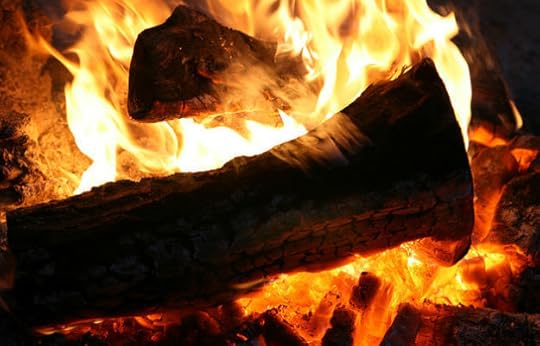
There's an old camping rule: Gather as much firewood as you
think you will need that night, and then double it, because that's how much you
will really need.
I suspect the same rule applies to Iraq
in terms of how long it takes for political developments to occur: In Iraq, everything -- good or bad -- takes at
least twice as long as you expect, and even longer than you feared. (This
thought inspired by watching Kirkuk
and Mosul
lately. Fallujah,
too.)
As for shelling the Green Zone, which happened the
other day -- well, that seems almost nostalgic to me.
Memories of Vietnam, spring 1968: When we encircled and destroyed the enemy
By Lt. Gen. John
Cushman, USA (Ret.)
Best Defense department
of living history
At the end of April 1968 the
2nd Brigade Task Force (three infantry battalions, one cavalry squadron,
artillery, and other units) of the 101st Airborne Division was operating north
of Hue. Three principles governed our operations: Work closely with the Vietnamese. Maintain unrelenting pressure on the
enemy. At every opportunity surround the enemy and destroy him.
The brigade was getting
a reputation. An NVA prisoner had quoted his company commander, "If we make
contact with the airborne, we get out fast. They will surround and kill you."
At my command post an NVA prisoner was being interrogated. I saw him pointing
at the Screaming Eagle patch on a nearby trooper. The interpreter told me he
was saying, "That little bird is real mean."
Then came our
encirclement at Phuoc Yen.
On April 28, a few miles
from our base camp at LZ Sally, the 1st ARVN Division's Black Panther Company
working with the 1/501 Infantry made heavy contact. It was at the north, or
open, end of a "stocking" formed by the Song Bo River around that village. Jim
Hunt, commanding the 1/501, used the river to trap the enemy.
He moved his B Company
alongside the Black Panthers. He moved his A Company overland to the Song Bo's
bank, west of the village. Jack Bishop's A/1/502, was helicoptered in; it
closed the top of the stocking. He placed the helilifted B/2/501 on the south
bank. We arranged with the district chief for three Popular Force platoons and
a platoon of hamlet militia to cover the east bank. Two-man foxholes ten feet
apart ringed the encircled enemy. At night
flare ships lit up the battlefield. The enemy fought on. Air, artillery, and
loudspeakers were called in. We reinforced the cordon. On May 3, after
defeating a last attempt to escape, the troops cleaned out Phuoc Yen.
They took 107
prisoners. They captured scores of weapons and the battalion's radio suite,
plus its SOI. U.S. losses: 8 KIA, 44 WIA. ARVN losses: 3 KIA, 12 WIA. We had
wiped out the 8th Battalion, 90th NVA Regiment.
An
encirclement began on May 5 when Huong Tra district reported that an NVA force had
holed up in La Chu, just off of Highway 1. Commanding the 2/501 Infantry, Dick
Tallman used his D Company to establish contact with the NVA at the hamlet's
north. By nightfall he had air assaulted his B and C Companies to join the
nearby D/1/501 in a four company encirclement.
The
next day we pulled back the rifle companies on the east, west, and south sides.
We brought in Julius Becton's 2/17 Cav, beefed up with APCs and tanks. After an artillery
preparation and four air strikes, the 2/17 attacked south, D/1/501 on the right,
and B/2/17 on the left. A/2/17 swung around to attack the hamlet from the east.
An
after-action report: "Progress was slow as the troops made a thorough search of
a vast network of bunkers and trenches... Intense fighting continued under
continuous illumination as the units advanced slowly and attacked the
well-entrenched enemy... Not until 0100 were the final series of bunkers overrun...
A sweep at first light revealed that elements of the C115 Local Force Company
and the 9th Battalion, 90th Infantry Regiment, had been destroyed." U.S.
casualties: 2 KIA,14 WIA.
These were two in a
series of eleven encirclements by the 2nd Brigade in March-June of 1968. Along
with other brigade operations, and combined with the aggressive operations of
the 1st ARVN Division and province forces, we together broke the back of the
NVA in Thua Thien province.
In our final encirclement the 1/501 Infantry,
the 2/17 Cavalry, a task force of the Vietnamese army and navy units commanded
by the Thua Thien province chief, and three platoons of U.S. Marines (Ontos,
Tank, and Amtrac) operated under brigade control south of Hue in a heavily infested
enemy shore line. From the after action report:
"On June 2, TF 2/17 Cav, with all elements of
the encirclement now under its opcon, maintained pressure on the enemy and
completed an airtight encirclement. That night the enemy sought vainly to break
out overland and RVN Navy boats on patrol captured 5 NVA prisoners with
weapons. On June 3, as psyops appeals to surrender were broadcast, TF 2/17
troops began to sweep into the village. After another encirclement night the
battles of TF 2/17 and TF 7 were over."
That action was the end of heavy fighting in my
time as brigade commander.
The redoubtable Major
General Ngo Quang Truong, commanding the 1st ARVN Division, and his province
chiefs were invaluable partners. One day in early June 1968 I was in his
office. He invited me to the Vietnamese Armed Forces Day ceremonies two weeks
hence, saying "Bring your colors." He had arranged for the president of the
Republic of Vietnam to present his country's cross of gallantry with palm to
the 2nd Brigade and to all its task force units.
I am grateful for the
performance of commanders like Jim Hunt, Dick Tallman, Jack Bishop, and Julius
Becton and their troops. Without that I would not be a general. How do I know
this?
I have been told that
immediately after General Bill Rosson, Deputy COMUSMACV, stood alongside me at
Phuoc Yen on May 1, 1968, he went to the command post of the 101st Airborne
Division. There he told the division commander, "I want you to write an
efficiency report on Cushman that will make him a brigadier general." That
report was on the top of my file when the board met in June.
Go to http://www.angelfire.com/rebellion/101abndivvietvets/.
Scroll all the way down to 'War Stories' and click. Then click on the seventh
item; it is a week by week tale of the 2d Brigade Task Force, January-June
1968.
May 29, 2012
We're sick of everyone who wears a military uniform being called a 'hero'
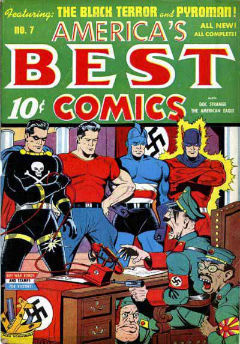
JPWREL says this:
Permit me to paraphrase Winston
Churchill's words about heroism. "People often act heroically because they
don't understand the dangers that lie ahead. But some see those dangers,
and are afraid of them but do what they do in spite of their fears. No
man can be braver than that."
We have a very special regard for
those that consciously consider the risks that lie ahead in moments of great
peril and yet through skill, willpower, and a selfless sense of duty perform
feats of courage. They are in fact 'heroic' in its classic sense, and
exceed the ordinary measure of honorably performed duty done in times of
danger.
Sadly, as Americans we have
devalued the word 'hero' by applying it to merely the performance of one's
responsibility, much like parents today overly praise their children for
everyday accomplishments. Particularly, especially in the media the
expression 'hero' seems generic and contains a disturbing element of
pandering.
Today, there is a vast void
between those that wear a uniform and go in harm's way and those that
don't. We watch from afar as uneasy spectators as our countrymen suffer
death and wounds of the flesh and mind for causes we often hold in doubt. So we revert to a hyperbole of gratitude that is seemingly harmless but in fact
laced with insincerity.
By diminishing the value of the
expression 'hero' to encompass the ordinary, how do we describe the 'extraordinary' intrepidness of the likes of Joe Foss, Eugene Fluckey, 'Butch' O'Hara,
John Basilone, and a host of others of such formidable stature? What other
term can we reserve for very special people who have transcended fear and
danger time and again and performed beyond the call of duty?
Rubber Ducky adds:
Is it just me or has the common
use of the phrase 'hero' gone completely out of control? I've known heroes,
Medal of Honor winners like Dick O'Kane (godfather of 'the new TANG' in which I
served as XO), Pat Brady, with whom I played a lot of handball, and Jay Vargas,
a National classmate. These guys and their ilk are heroes; for them the concept
was crafted.
But I've never claimed that any
of my 37 years' service was 'heroic,' nor would I attribute heroism per se to
those I served with, even the friends I lost in THRESHER and SCORPION.
I think it gives the civilian
population yet another reason to ignore war and those now fighting to let them
call everyone a hero. And it cheapens the real thing.
What do you say?
A muddled article about the COIN smackdown between West Point profs
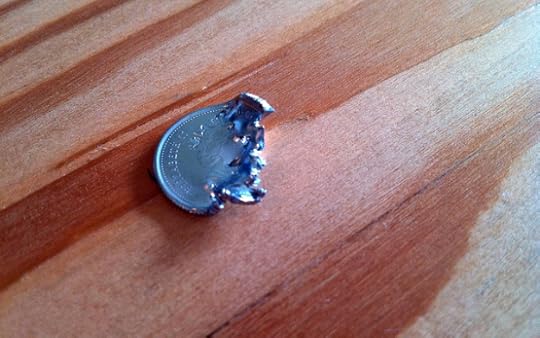
While I was out Elizabeth Bumiller of the New
York Times had a piece
looking at how two West Point profs, Colonels Gian Gentile and Michael Meese,
disagree over the future utility to the U.S. Army of counterinsurgency
theory. Gentile says none. (The article
is a bit confusing because it conflates belief in the value of the Iraq war
with support for COIN theory. For example, contrary to what the reporter seems
to think, one can easily believe a) we should not have gone to war in Iraq, b)
that COIN worked, and c) but that nothing was gained in that war.)
My friend retired Col. Bob Killebrew responded from Belgium,
where he was on a Waterlook/Arnhem staff ride, that, "The Germans would have agreed with Gentile: They didn't see a need for a counterinsurgency doctrine, either. When they were
confronted with resistance, they just rounded up hostages and shot them."
Thomas E. Ricks's Blog
- Thomas E. Ricks's profile
- 436 followers



